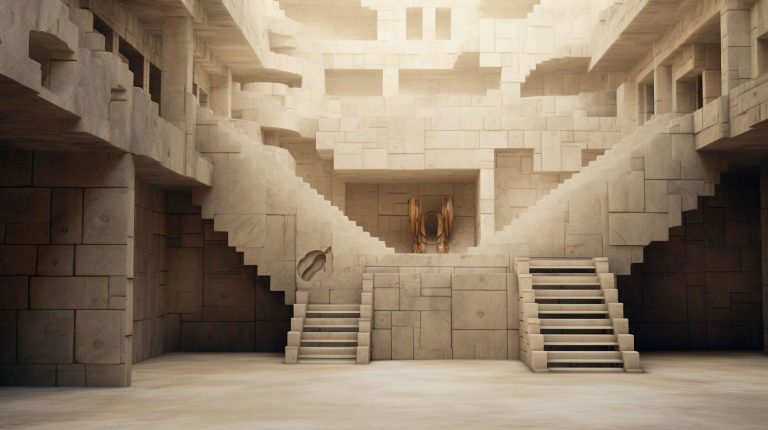By stripping down the composition to its essential elements, minimalist photographers are able to create stunning images that offer a unique visual experience. In this article, we will explore the beauty of simplicity in fine art photography and how it can elevate the viewer’s perception.
The Essence of Minimalism
Minimalism, in the context of fine art photography, can be defined as a deliberate reduction of visual elements to their absolute minimum. It is about distilling the image to its core, eliminating any distractions that may detract from the intended message. By embracing minimalism, photographers aim to create a sense of calm and serenity that allows the viewer to focus on the essential aspects of the composition.
Key Takeaways:
- Minimalistic photography simplifies compositions to their core elements.
- The purpose is to convey a sense of calm and allow the viewer to focus on the message.
- It encourages viewers to evoke their own emotions and interpretations.
The Power of Negative Space
One of the key techniques used in minimalistic photography is the intentional use of negative space. Negative space refers to the unoccupied areas in an image that surround the main subject. By incorporating ample negative space, photographers create a sense of solitude and emptiness, allowing the subject to stand out even more.
Through the strategic placement of the subject in relation to the negative space, photographers can evoke emotions such as isolation, tranquility, or contemplation. The absence of visual noise directs the viewer’s attention to the subject, creating a strong impact and emphasizing its significance within the frame.
Key Takeaways:
- Negative space plays a crucial role in minimalistic photography.
- It enhances the impact and significance of the main subject.
- Emotions such as isolation and tranquility can be evoked through negative space.
The Power of Lines and Shapes
Another important aspect of minimalistic photography is the emphasis on lines and shapes. Utilizing clean lines and geometric shapes, photographers can create visually striking compositions that possess a strong graphical quality. These elements help to simplify the image further and contribute to the overall minimalistic aesthetic.
Lines can guide the viewer’s eye through the frame, leading them towards the subject or creating a sense of movement. Geometric shapes, such as squares, rectangles, or circles, add structure and order to the composition. By combining these elements, photographers can create visually balanced images that are both captivating and aesthetically pleasing.
Key Takeaways:
- Clean lines and geometric shapes enhance the visual impact of minimalistic photographs.
- Lines can guide the viewer’s eye and create a sense of movement.
- Geometric shapes add structure and balance to the composition.
The Embrace of Minimalism
Embracing minimalism in fine art photography offers several advantages and benefits. Not only does it allow photographers to create visually impactful images, but it also encourages viewers to engage with the photographs on a deeper level. By stripping away the unnecessary details and focusing on the essence, minimalistic images ignite the viewers’ imagination, enabling them to evoke their own emotions and interpretations.
Furthermore, minimalistic photography offers a fresh perspective in a world filled with complexity. It provides a respite from the constant flood of information and invites viewers to appreciate the beauty found in simplicity. This style prompts contemplation, introspection, and a sense of calm, allowing viewers to disconnect from the chaotic outside world and find solace in the image.
The Timeless Allure of Minimalism
Minimalistic approaches in fine art photography have stood the test of time and continue to captivate audiences with their timeless allure. They offer a powerful visual language that transcends cultural boundaries and speaks directly to the human experience. By focusing on the essential elements and creating powerful visual narratives, minimalistic photography enables the viewers to appreciate the beauty and meaning within simplicity.
Key Takeaways:
- Minimalistic photography encourages viewers to engage on a deeper level.
- It provides a respite from complexity and invites contemplation.
- Minimalistic approaches have a timeless appeal that transcends cultural boundaries.
In Conclusion
Fine art photography, with its diverse range of styles and approaches, offers a world of artistic possibilities. However, it is the simplicity and power of minimalistic photography that truly stands out. By incorporating negative space, clean lines, and geometric shapes, minimalist photographers create visually striking compositions that evoke emotions and invite deep contemplation.
Embracing minimalistic approaches allows photographers and viewers alike to appreciate the beauty found in simplicity while connecting on a profound level. So, the next time you come across a minimalist photograph, take a moment to immerse yourself in its captivating allure, and let the beauty of simplicity leave a lasting impression upon your soul.
























+ There are no comments
Add yours